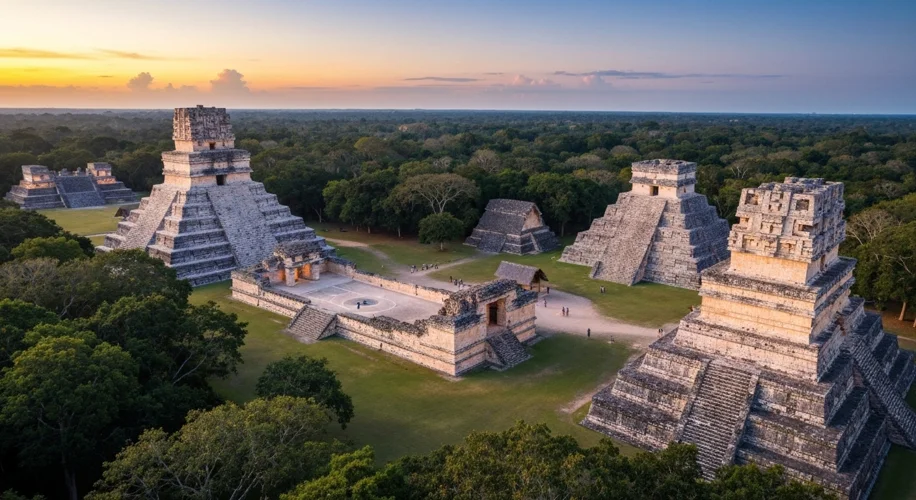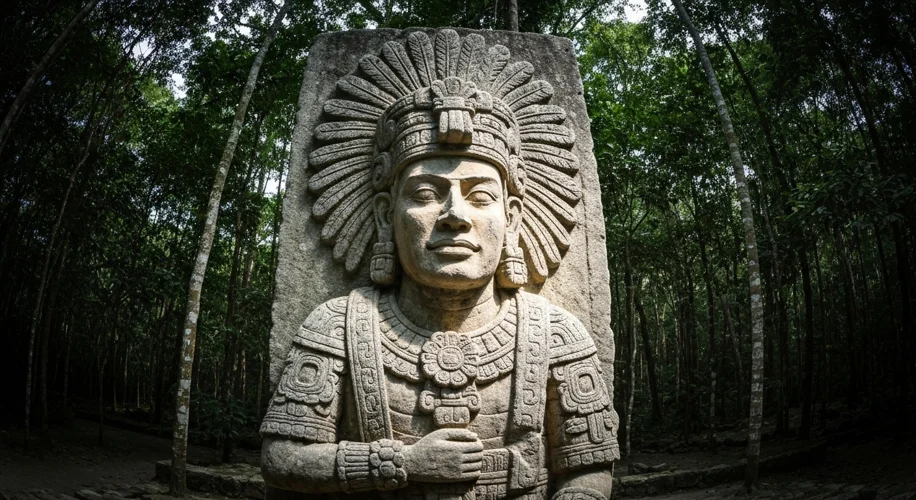Picture this: a dense, emerald jungle, alive with the cacophony of unseen creatures. Sunlight dapples through the thick canopy, illuminating colossal stone structures, their surfaces intricately carved with stories of gods and kings. This is the world of the Maya, a civilization that rose from the heart of Mesoamerica, leaving behind a legacy of breathtaking achievements and enduring mysteries.
For centuries, from roughly 250 CE to 900 CE, the Maya civilization reached its zenith, flourishing across what is now southeastern Mexico, Guatemala, Belize, and parts of Honduras and El Salvador. These were not nomadic tribes; these were city-builders, astronomers, mathematicians, and artists of unparalleled sophistication. Their cities, like Tikal, Palenque, and Chichen Itza, were not merely collections of buildings but vibrant centers of political power, religious devotion, and cultural exchange.

The Maya developed one of the most advanced writing systems in the ancient world – a complex hieroglyphic script that adorned stelae, lintels, and pottery, preserving their history, beliefs, and astronomical observations for posterity. Think of it as their very own language of the gods, etched in stone.
Their intellectual prowess extended to the realms of mathematics and astronomy. They independently developed the concept of zero, a monumental achievement that allowed for complex calculations. Their understanding of celestial cycles was astonishingly accurate. They created intricate calendars, including the famous Long Count calendar, which meticulously tracked vast periods of time, and the Tzolk’in, a sacred 260-day cycle. These calendars were not mere timekeeping devices; they were deeply intertwined with their religious and agricultural practices, dictating everything from when to plant crops to the auspicious dates for ceremonies.
At the heart of Maya society were their city-states, often engaged in complex political maneuvering, alliances, and warfare. Rulers, known as k’uhul ajaw (divine lords), held immense power, acting as intermediaries between the people and the cosmos. The lives of these rulers, their triumphs, and their struggles are vividly depicted in the surviving inscriptions, offering us intimate glimpses into their world.
But as with many great ancient civilizations, the Maya experienced a decline. Around the 10th century CE, many of the great southern lowland cities were mysteriously abandoned. The reasons for this collapse are still debated by scholars. Was it environmental degradation, prolonged drought, internal conflict, or a combination of factors? The jungle, which had nurtured their civilization, seemed to reclaim its dominion, shrouding the magnificent cities in mystery.
Yet, the Maya people and their culture did not vanish. While the Classic Maya cities declined, Maya civilization continued to thrive in other regions, particularly in the Yucatan Peninsula. Their descendants still live in these areas today, maintaining a rich cultural heritage and speaking Maya languages.
The Maya left behind a profound legacy. Their architectural marvels continue to inspire awe, their sophisticated understanding of mathematics and astronomy predates many Western discoveries, and their intricate art and writing offer a window into a complex and fascinating worldview. They were a civilization that looked to the stars, understood the cycles of time, and built monumental testaments to their beliefs, reminding us that history is not just a collection of dates and facts, but a vibrant tapestry woven with human ingenuity, ambition, and the eternal quest for meaning.

